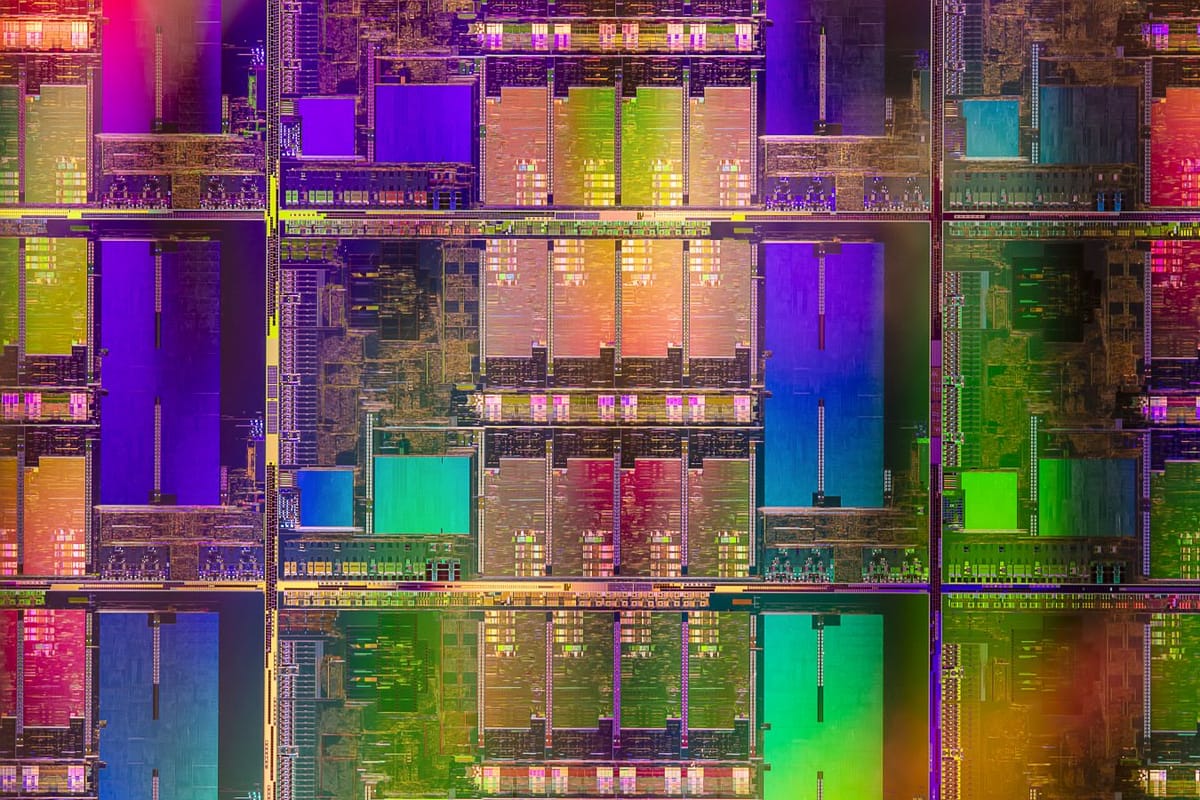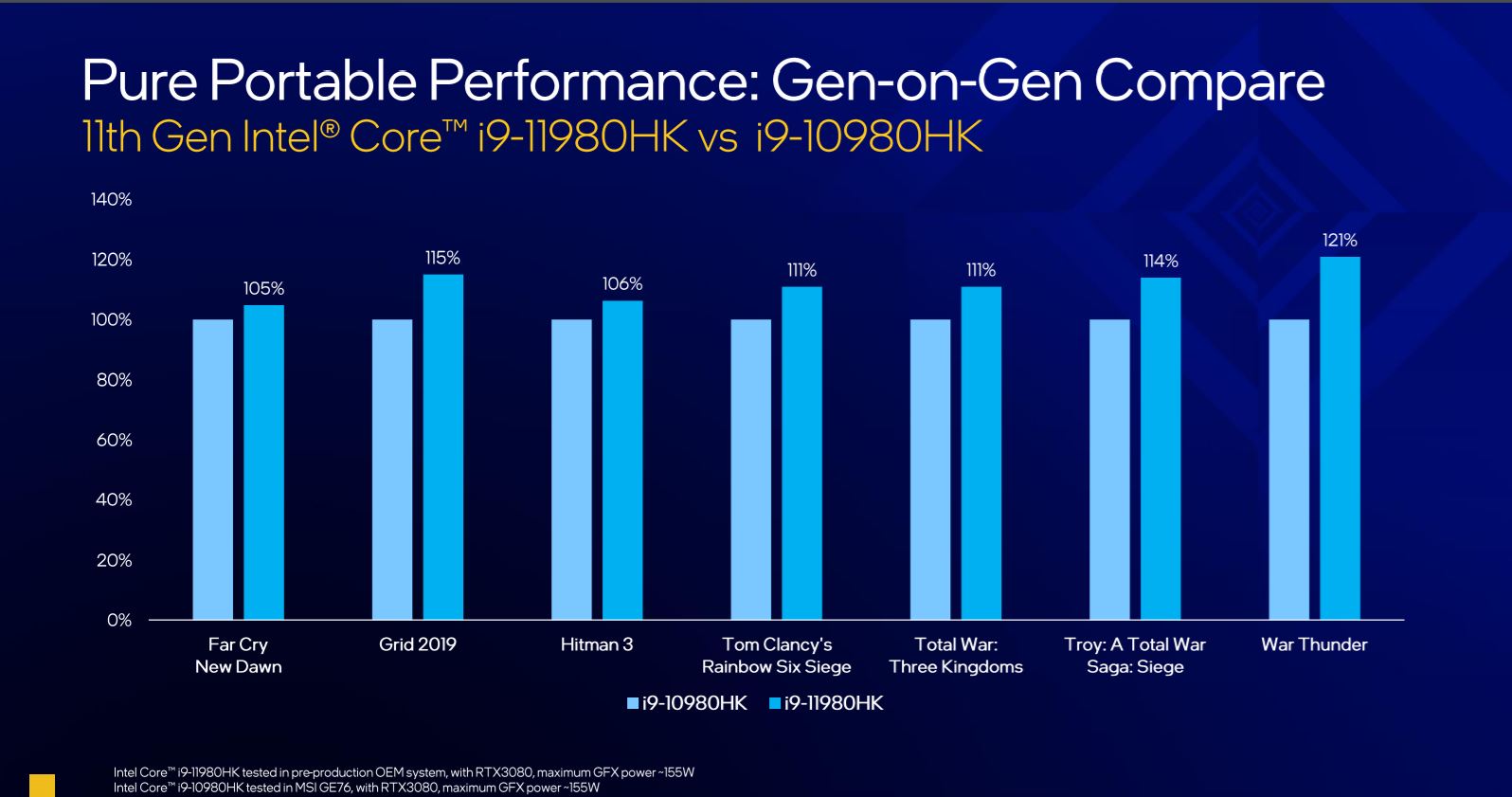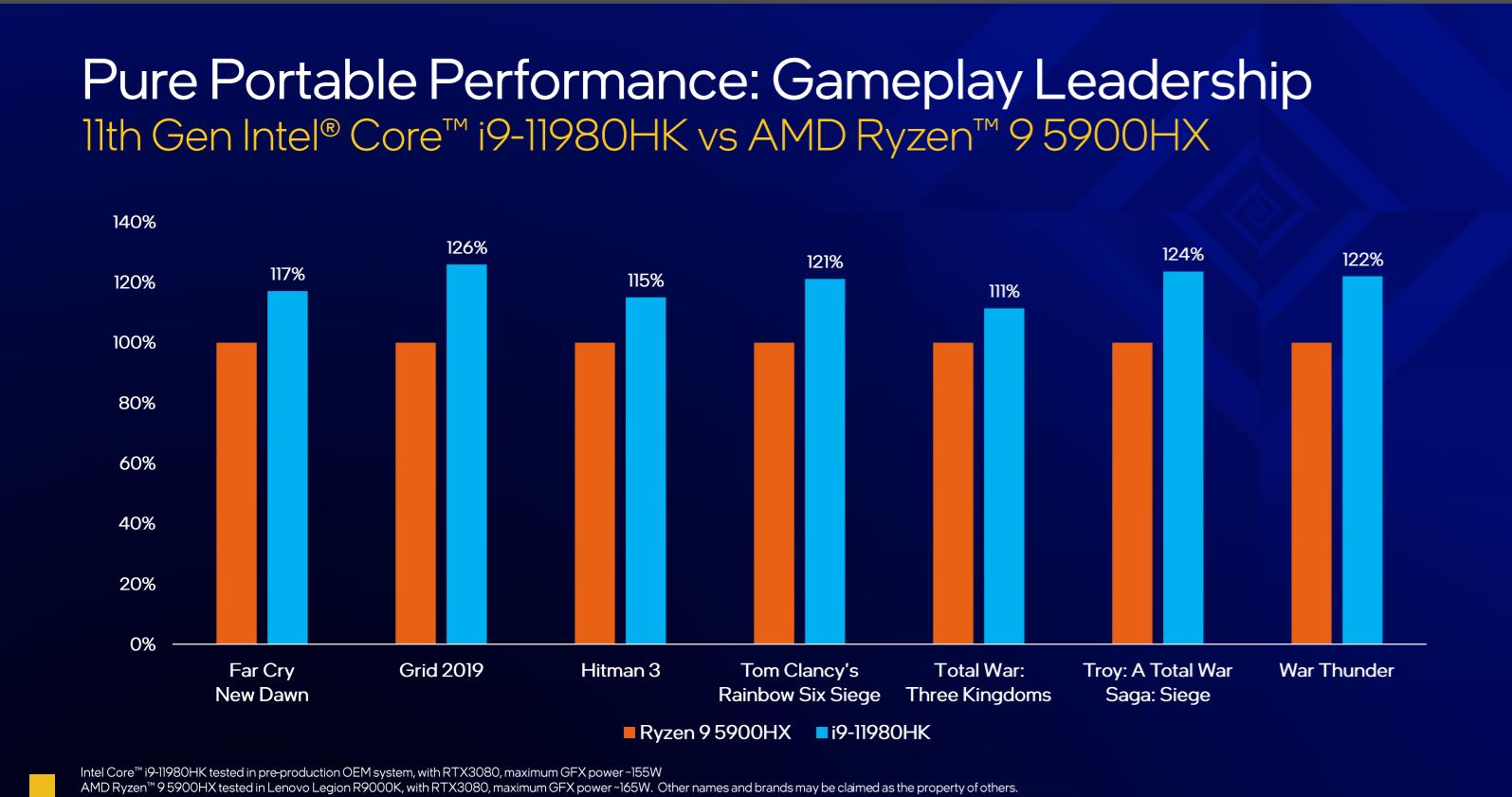
We sat down with Interim General Manager Premium Innovation & Enthusiast, Director Enthusiast Laptop Innovation Team, Kim Algstam, and Senior Director of Product Management and Operations for business Client Platforms, Client Computing Group Christopher Yahna from Intel to talk with them on the 11th Gen Intel processors that are on the immediate horizon and asked them a few questions. The first question was how big their business cards are because wow those titles are long, but more importantly we wanted to know what makes the mobile version of their wildly-efficient 11th Gen processor stand out not only among their competitors, but also against their predecessors. We got way more than we bargained for, and this summer, so will you.
The i9-11980HK test cases were with laptops equipped with an RTX 3080, with the i5-based processor being partnered with an RTX 3060 MaxQ GPU and 32GB of 3200 Hz of RAM running Windows 10. With specs out of the way, let’s look at what’s under the hood.
The Intel Core i9-11980HK is an octa-core 64-bit processor built on a 10nm process, and made specifically for mobile platforms. It sports eight cores with 16 threads, running upwards of 5 GHz on a single core, or 4.5 GHz with all cores engaged. Both the i9 and i5 processors support PCIe 4, with 20 lanes, with support for Thunderbolt 4, USB 4, and WiFi 6E baked right in. It also brings support for up to 128GB of memory, which should be useful for manipulating extremely large files such as 4K/120 video.
Obviously the faster clock speed is poised to drive additional performance and headroom, but how much? Intel is promising up to 19% improvement from the previous generation to this new generation, and we saw that borne out in the provided graphs. Games like Grid 2019 and Troy: A Total War Saga: Siege saw up to 15% improvement, with War Thunder showing upwards of 21% more frames per second. Compared to a Ryzen 9 5900HX, we saw even more room to run, with Troy snapping up 24%, War Thunder nabbing 22%, and Grid 2019 tipping the scales at 26% improvement over the AMD processor.
The majority of the focus for our recent brief was centered around the i9-11980HK processor, but that doesn’t mean that Intel only had the extreme cases in mind. We also got to see the i5-11400H benched against the AMD Ryzen 9 5900HS — arguably a more mainstream solution for most consumers. Here we saw more modest gains over the 5900HS, with almost all games falling within a 4% improvement over AMD’s offerings.
So let’s go back to that talk about lanes, because that’s a big point. This 11th Gen processor is capable of delivering across 20 PCIe Gen 4 lanes. That’s 16 lanes for discrete graphics like the RTX 3080 when paired with a SSD to use the other four lanes. You can also break it up with 8 lanes for graphics and dual SSDs in RAID0, if your workload calls for it. This level of flexibility is a first in an Intel processor, and it should provide the extra bandwidth needed to bridge the gap between a mobile processor and a card.
If you’ve read our recent laptop reviews you might have noticed that NVIDIA’s processors have pioneered a lot of great tech to help adjust voltages to put power where it’s needed, when it’s needed. This is called “Resizable BAR”, and, if you’ve got a GeForce RTX 30-series chip, you’ve got it at your fingertips. Resizable BAR allows the CPU and GPU to communicate directly with each other, passing textures, shaders, and geometry back and forth, but more importantly it doesn’t chunk it up into pieces, instead sending the entire asset as a whole across the frame buffer. This pipeline also allows these sorts of transfers to occur concurrently across the PCIe lanes, allowing parallel processing instead of queueing. It’s the wave of the future, and these new Intel processors support it.
Intel will be shipping a million processors at launch, and over 80 distinct designs are ready to go from partners including Acer, Dell, Gigabyte, HP, Lenovo, MSI, Republic of Gamers, and Razer, just to name a few. Best of all, these devices are starting at an MSRP of just $699. What do you get for that entry price? Well, the claim is 1080p and 60fps at high settings. If you want to punch a little higher than that, you can get into 4K territory for roughly double that, with the top tier punching in at a staggering 4K/120Hz at maximum settings. We’ll have a few reviews of our own to share with you very soon, so stay tuned.
While these new processors are faster, with wider lanes and more of them, and use power more effectively where it’s needed, it’s the resizeable BAR that is the game changer. Paired with the newest GPUs from NVIDIA, these new processors are going to be the best things humming for some time to come.
Intel will be shipping the H-Series 11th Gen processors this summer. While we don’t yet have pricing, feel free to drool over these incredible specs.





